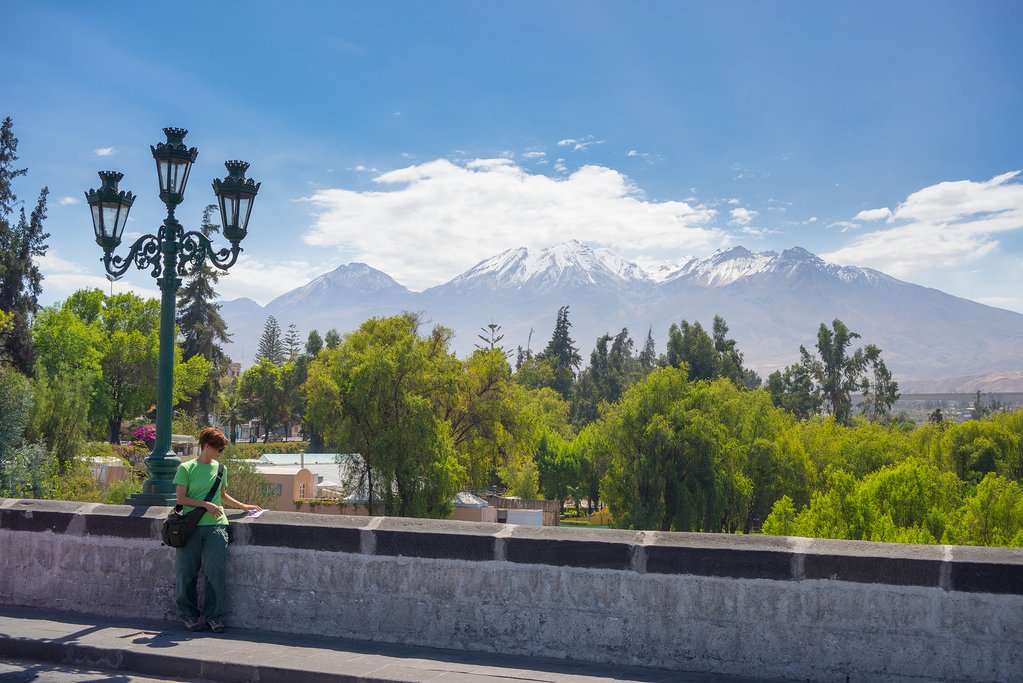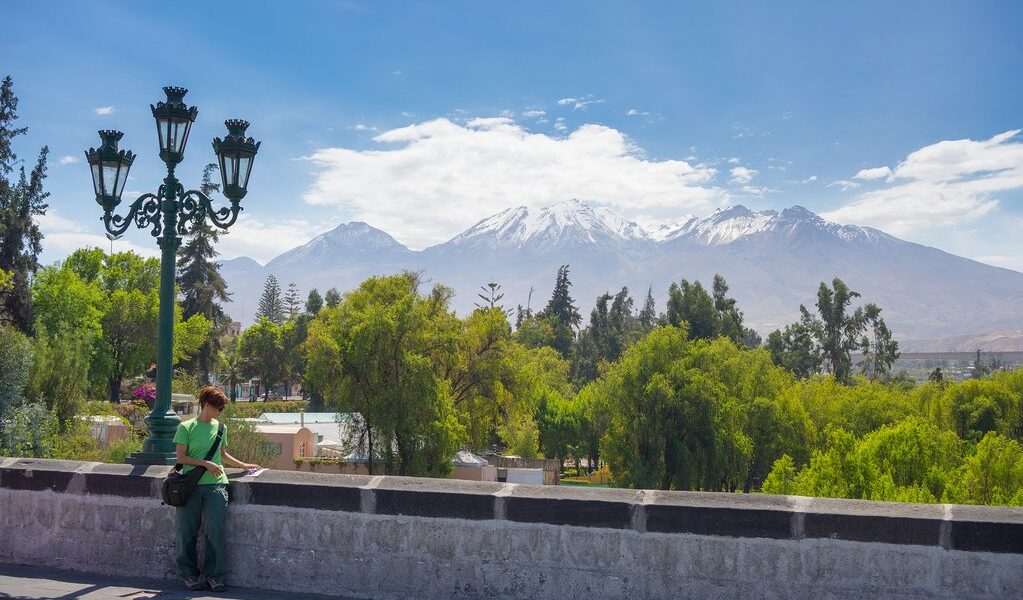
Starting a new book is like opening the door to another world. Get in the mood for your trip to Peru by delving into one of these recommended titles: from fiction to history to poetry, they’re great introductions to the country and its culture.
Peru, a land brimming with the echoes of ancient civilizations and breathtaking natural wonders, stands as a jewel in the crown of South America. It’s a place where the past and present intertwine, visible in iconic sights like the majestic ruins of Machu Picchu, the imposing Incan fortresses that dot the landscape, the serene grazing llamas that roam the highlands, and the perpetually snow-capped peaks of the formidable Andes Mountains. However, for many travelers who flock to this remarkable country, the captivating stories that lie hidden behind these famous sites and within these beautiful landscapes often remain untold.
One could certainly wait until arriving on Peruvian soil, perhaps thumbing through a guidebook purchased at the airport or delving into a novel penned by a local writer found in a quaint bookstore. This approach offers a certain spontaneity and discovery. Alternatively, a more prepared traveler could embark on a literary journey before even setting foot on the plane, immersing themselves in the rich tapestry of Peruvian history and culture. This proactive approach allows for a deeper understanding and appreciation of the destination.
Choosing to delve into one or more of the titles suggested below is not merely about getting into the right frame of mind for your upcoming trip. Instead, these books provide invaluable cultural and historical context that will undoubtedly enrich your adventures in Peru, transforming them into truly unforgettable experiences. These literary companions are also ideal for those moments spent traveling from one captivating locale to another within Peru. That is, of course, if you can manage to tear your gaze away from the awe-inspiring mountain vistas unfolding outside your window. The landscapes of Peru are so naturally captivating that it can be tough to put down a book!
## #1 Conversation in the Cathedral (Mario Vargas Llosa)
**(Image of the book cover)**
Mario Vargas Llosa, a literary giant of our time, stands as a living testament to the power of storytelling. This Peruvian-born writer, a recipient of the prestigious Nobel Prize for Literature in 2010, has graced the world with countless novels, thought-provoking plays, and insightful nonfiction works. For anyone contemplating a journey to Peru, exploring at least one of Vargas Llosa’s masterpieces is an absolute must. A magnificent starting point is undeniably Conversation in the Cathedral, originally published in 1969.
The novel is meticulously set in the 1950s, a period marked by the iron-fisted dictatorship of General Manuel Odría. The narrative follows the life of Santiago Zavala, an intellectually gifted young man born into a wealthy industrialist family. Despite his privileged background, Santiago finds himself trapped in an unfulfilling job, writing a column for a local tabloid newspaper in the bustling city of Lima. Growing increasingly disillusioned with the direction his country is heading under Odría’s oppressive regime, Santiago’s path unexpectedly intersects with Ambrosio, his father’s former chauffeur.
A chance encounter leads to a lengthy and revealing conversation between the two men at a bar aptly named La Catedral (The Cathedral). This dialogue forms the very foundation of the book. Through their shared experiences and perspectives, they paint a vivid picture of life under the dictatorship, exposing the profound impact the regime had on Peruvians from all walks of life, regardless of their social standing, whether wealthy elites like Santiago or members of the working class like Ambrosio. The novel showcases the many and multifaceted levels of suffering within this time period.
## #2 Turn Right at Machu Picchu: Rediscovering the Lost City One Step at a Time (Mark Adams)
**(Image of the book cover)**
Mark Adams’ captivating book, Turn Right at Machu Picchu: Rediscovering the Lost City One Step at a Time, published in 2011, achieved the notable status of a New York Times bestseller. Considering the sheer number of curious tourists who eagerly venture into the lost Incan city each day of the week, its popularity is easily understood. Adams delves deep into the annals of history surrounding the discovery of Machu Picchu, painstakingly uncovering the intricate details of Hiram Bingham III, the American explorer widely credited with bringing the ruins to the world’s attention. However, Bingham’s legacy is not without controversy, as he has also faced criticism for allegedly removing artifacts from the site.
The narrative artfully alternates between 1911, when Bingham first explored the area, and the present day, seamlessly weaving together Bingham’s original journey with the author’s own personal expedition to Machu Picchu. Adams, unlike the seasoned explorers who came before him, had never even experienced the simple act of sleeping in a tent prior to embarking on this ambitious trip. This lack of experience lends a unique perspective to the modern-day narrative, making it not only insightful about the practical challenges of hiking the renowned Inca Trail but also genuinely humorous. The book is an interwoven story of history, mystery, comedic moments, and real-life adventure, all seamlessly rolled into one. Turn Right at Machu Picchu undeniably serves as the quintessential literary companion to read before embarking on your own adventure to Peru.
## #3 The Conquest of the Incas (John Hemming)
**(Image of the book cover)**
John Hemming’s expansive and meticulously researched work, The Conquest of the Incas, stands as an absolute must-read for anyone with a keen interest in history. Long before Spanish explorers finally set foot in the region we now recognize as Peru, their presence was already felt in nearby Panama. Hemming’s book begins with their initial colonization efforts in Central America in 1513, methodically revealing how the Spanish meticulously laid the essential groundwork for a large-scale expansion throughout the Americas. This expansion ultimately culminated in the overtaking and near obliteration of the flourishing Inca civilization.
For providing vital context when you are visiting Machu Picchu, or are touring any of the other Incan ruins that are scattered throughout Peru, there is arguably no better book to read than this monumental work. Author John Hemming writes with an air of profound knowledge and deep-seated experience. He was himself an explorer in his early years. He worked for a Brazilian mapping agency. This book was first published in 1970, and Hemming went on to be the Director of the Royal Geographic Society in London from 1975 to 1996.
## #4 Deep Rivers (José María Arguedas)
**(Image of the book cover)**
José María Arguedas’ deeply moving third novel, Deep Rivers, garnered the esteemed Peruvian National Culture Award in 1959, solidifying its place as a literary treasure. The story intricately follows the life of Ernesto, a young man grappling with a profound internal identity conflict. Raised within an indigenous community, Ernesto finds himself thrust into the unfamiliar world of a Catholic boarding school as a teenager. His personal struggle mirrors the broader, pervasive conflict between native and Spanish cultures that has long defined Peru.
While it might be imperceptible in the English-language translation, the author masterfully fuses Quechua and Spanish languages within his prose, a remarkable feat in itself. Beyond delving into significant social issues, Deep Rivers is widely regarded as a heartfelt love letter to the breathtaking natural beauty of Peru. As you immerse yourself in Arguedas’ evocative descriptions of the Peruvian landscapes, you might be inspired to grab a notebook yourself and capture your own impressions of this captivating land.
## #5 The Heights of Macchu Picchu (Pablo Neruda)
**(Image of the book cover)**
Gabriel Garcia Marquez, a literary luminary in his own right, once declared Pablo Neruda to be “the most important poet of the twentieth century — in any language.” Neruda’s lyrical and musical language often serves as a vibrant celebration of landscapes, whether in his native Chile or in Italy, where he spent time in exile. Fortunately, Neruda also had the opportunity to visit Machu Picchu in October of 1943, and he was so profoundly moved by its grandeur that he felt compelled to write an extensive poem about it.
The Heights of Machu Picchu, first published in 1946, is a captivating book-length poem. Divided into twelve distinct *cantos*, or sections, it guides readers through the poet’s profound journey to the Inca city. This journey is not merely physical; it is also deeply internal. Throughout the various stages of his exploration, the protagonist reflects on his romantic disappointments and contemplates the deeper significance of his own existence.
Upon arriving at Machu Picchu, about halfway through the epic poem, in the sixth canto, the poet is overcome with a sense of joy and inspiration. He vividly describes the splendor of the ancient city, expressing profound admiration for the intelligence and unwavering dedication of the people who built it. However, as the poem continues, the poet is increasingly filled with despair as he contemplates his own mortality. Like the Incans who meticulously constructed the settlement, he acknowledges that he is mortal and that only the landscape itself will endure.
The Heights of Macchu Picchu was subsequently included in one of Neruda’s most significant works, Canto General (1950). However, it stands powerfully as a standalone work. It is also an ideal companion to tuck into your backpack for a scenic train ride, or even for the long-anticipated hike to Machu Picchu itself.
B-2106

